A Proposal: Women and the Printed Matrimonial Photograph
Cheryl Mukherji
This essay was commissioned by Serendipity Arts Foundation for Serendipity Arts Foundation blog Write | Art | Connect.
The Bollywood movie, Main, Meri Patni Aur Woh (2005), follows the marital life of 34 years old Mithilesh Shukla, a librarian at Lucknow University. The movie opens with a scene in the university cafeteria where Saleem, Mithilesh’s best friend, excitedly runs up to hug Mithilesh. There is a photographic print the size of a postcard in his hand. Saleem holds it up and promptly asks his friend: ‘Kaisi lagi?’ (How is she?) Mithilesh, confused and hesitant, replies with ‘Kya matlab ki kaisi lagi?’ (What do you mean by how is she?). As the narrator voices that Saleem’s mind has been preoccupied with marriage: ‘Yehi hain jinke saath humey zindagi guzarni pad sakti hai’ (she is the one I might have to spend my life with), it becomes clear that the photograph he’s holding is matrimonial.
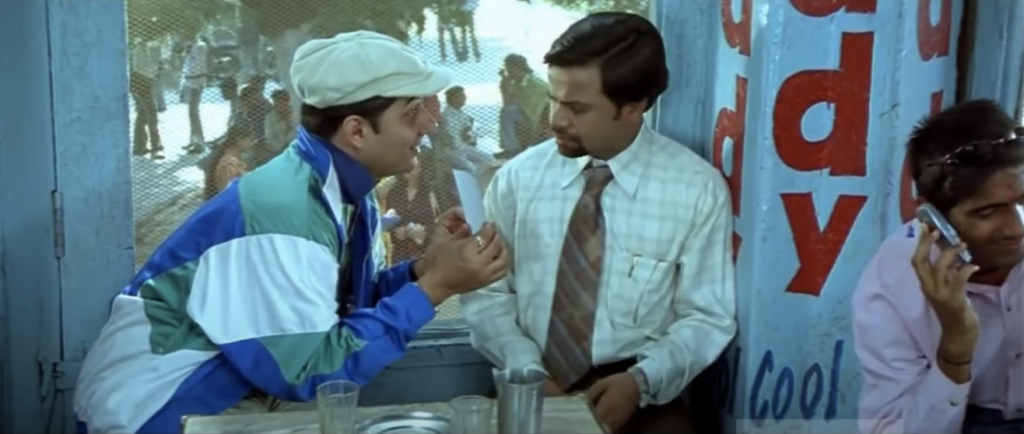
Saleem pesters on: ‘Arrey, aapko kaisi lagi?’ (How do you like her?), Mithilesh shows no interest in seeing the photograph, implying that it is meant only for Saleem. He says that he must decide based on their compatibility and understanding instead of her looks. Saleem looks at the photograph once again, before he points to another woman in the distance in the cinematic frame and exclaims, ‘Isse fair toh wohi hai…kam se kam utni fair toh honi chahiye na!’ (She is fairer than her, one should at least be this fair, right!), turning a deaf ear to Mithilesh’s advice.
The photograph is handled, viewed, and critiqued in the minute-long scene. One sees an impression of a portrait of a woman in the pixelated movie print for a moment and learns only one thing about her: she is not as fair as Saleem would like. The photograph stands in for the absent woman, evoking desire and scrutiny at the same time. Its meaning rests in its function: an arranged marriage proposal.
In her essay Photographing the Feminine, Suryanandini Narain writes, ‘The phenomenon of the matrimonial photograph is a necessary aid to the arranged marriage system where the bride and groom do not see each other in person until the families approve, and hence the image acts as a substitute for personal interaction. …It reaches destinations where a young woman of marriageable age would not have access to, either due to conservative social restrictions, or the unfamiliarity of the audience, or simply physical distance.’
A printed matrimonial photograph is usually 4 by 6 inches in size, unframed, and in transit along with other documents like the biodata and horoscope, which constitute a package sent to prospective brides and grooms in the modern arranged marriage market. In her book Marriage and Modernity: Family Values in Colonial Bengal, Rochona Majumdar argues that arranged marriage is a modern practice because its performance from the late nineteenth century involves usage of institutions and ideas central to any understanding of modernity: urban life, Western education, the print media (the publishing of matrimonial advertisements seeking brides and grooms), monetization of relationships (the escalation in the practice of dowry), and marriage laws—as a result creating new patriarchy under colonial rule in India.
With the rise of matrimonial advertisements published in national dailies, a market for arranged marriage flourished over the years, where prospective brides and grooms sought their life partners. Within this market, the matrimonial photograph becomes a token of ‘visual currency’, in terms of John Tagg’s definition of ‘items produced by a certain elaborate mode of production… distributed, circulated, and consumed within a given set of social relations: pieces of paper that change hands, find use, meaning, and value in certain social rituals’. Moving through the various stages of the arranged marriage market, the matrimonial photograph takes on various meanings, evoking aspiration, desire, and alliance—sometimes, all at once.
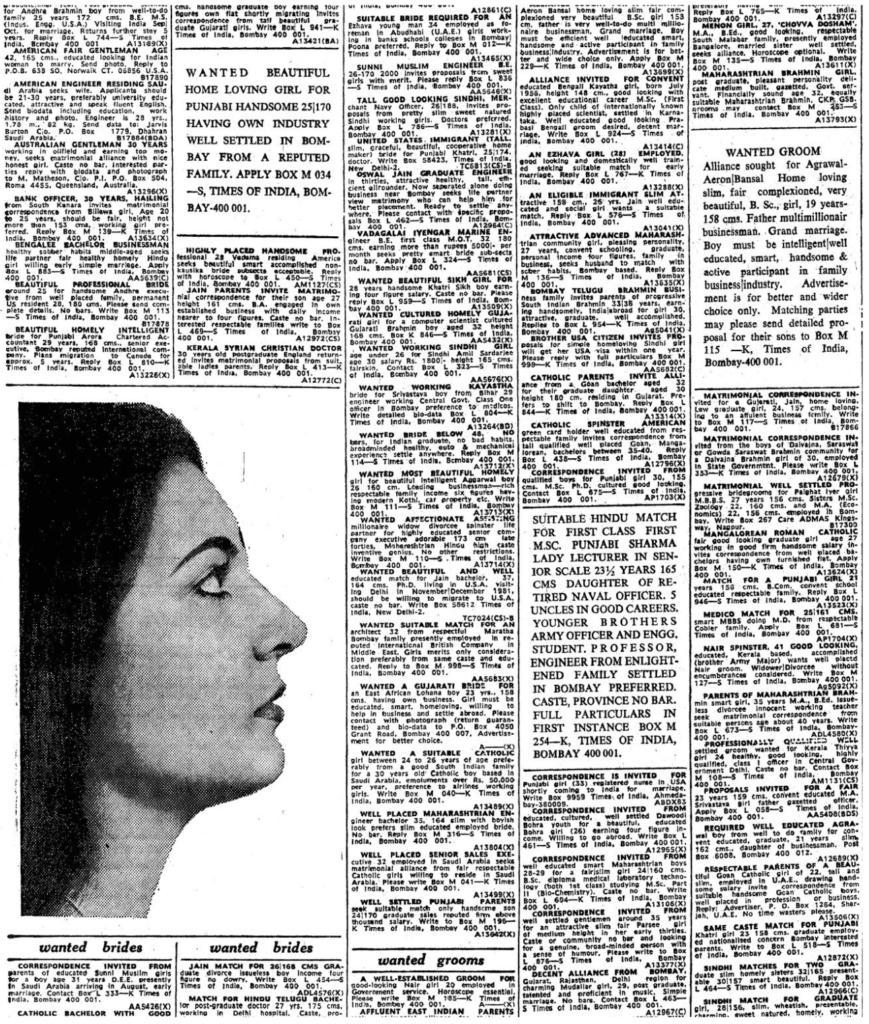
Men, in matrimonial advertisements, are mainly valued for their professional qualifications and social status, while women must unequivocally be good-looking over other attributes of education and appropriate caste. When translated and coded into matrimonial photographs, desirable qualities are embodied by or projected onto prospective brides and grooms often by using various props that represent upper-caste, professional success, wealth, and education. The sitters wear heavy jewelry, embroidered, and bright clothes. They pose with books, and framed graduate degrees against elaborately hand-painted backdrops to be photographed by a professional in a studio.
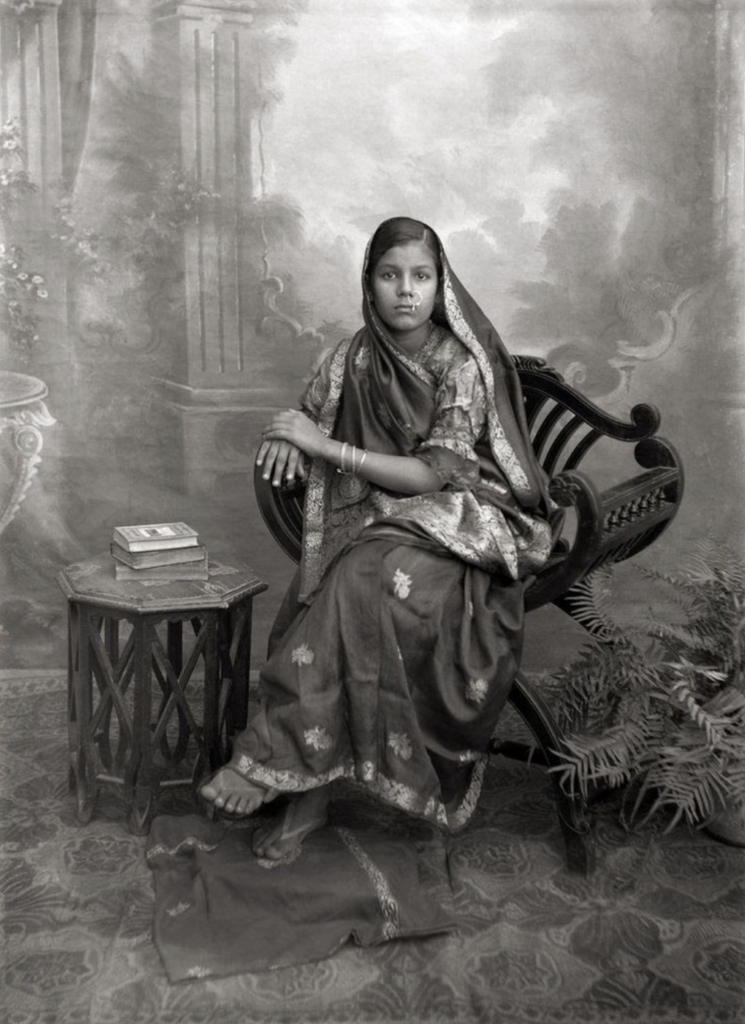
Affiliation to a caste group is an important mark of identity in contemporary Hindu society. Arranged marriages, and in extension matrimonial photographs, become a space for people to exercise this identity. Since caste is the focus of aspiration and the mobilization for the pursuit of group or individual interests, participating in this market means that people, often exclusively, seek alliances with families of the same caste or higher.
As upper-caste Bengalis, my mother’s family started seeking an ‘equal’ match for her early on. She had her matrimonial photographs taken every year from the age of 22 to 26, by the same photographer at her medical college who photographed surgical specimens and cadavers. Amassed over several summers of portrait sessions, this collection of matrimonial photographic prints is a record of my mother’s twenties—when she was as old as me. In her first matrimonial photograph, my mother wore a dull-red saree with a gold border lining its edge. It lay in the back of her closet, until the decisive moment, only to be captured in an out-of-focus photograph.
She stood in her grandmother’s garden, looking in the distance with a half-grin.
Her hair was short enough to barely cover her ears.
She wore a gold bangle on each of her wrists.
In some of the photographs taken over the years, she posed in the same garden but wearing different sarees, holding the half-grin and hands by her side. In other photographs, she posed sitting in her living room or kitchen, surrounded by her belongings, pots and pans, flowers in the vases—always blooming—and her hands rested gently on her knees.
The preference for the ‘poses’ within a domestic setting reflects a prospective bride’s homely qualities and responds directly to the matrimonial advertisements which seek ‘a beautiful home-loving girl’. For women, eligibility is often determined by a domestic ideal that includes proficiency in household tasks—coded within expressions like ‘skilled in domestic work’ in advertisements—a modicum of education, and a high premium on good looks.
The matrimonial photograph operates on identities—constructing them rather than expressing them. A ‘good’ matrimonial photograph is one where the prospective bride performs the prescribed notions of femininity–like sitting with her legs crossed, hands resting on her knees, a demure gaze, a suggestive smile, and dressed in her traditional best. A prospective groom’s family would often request two matrimonial photographs from the brides’: first, a close-up portrait, and second, a full-length portrait. They would be judged based on spotlessness of skin, fairness in complexion, sharpness of facial features, height, and build—complying with eurocentric standards of beauty and desire.
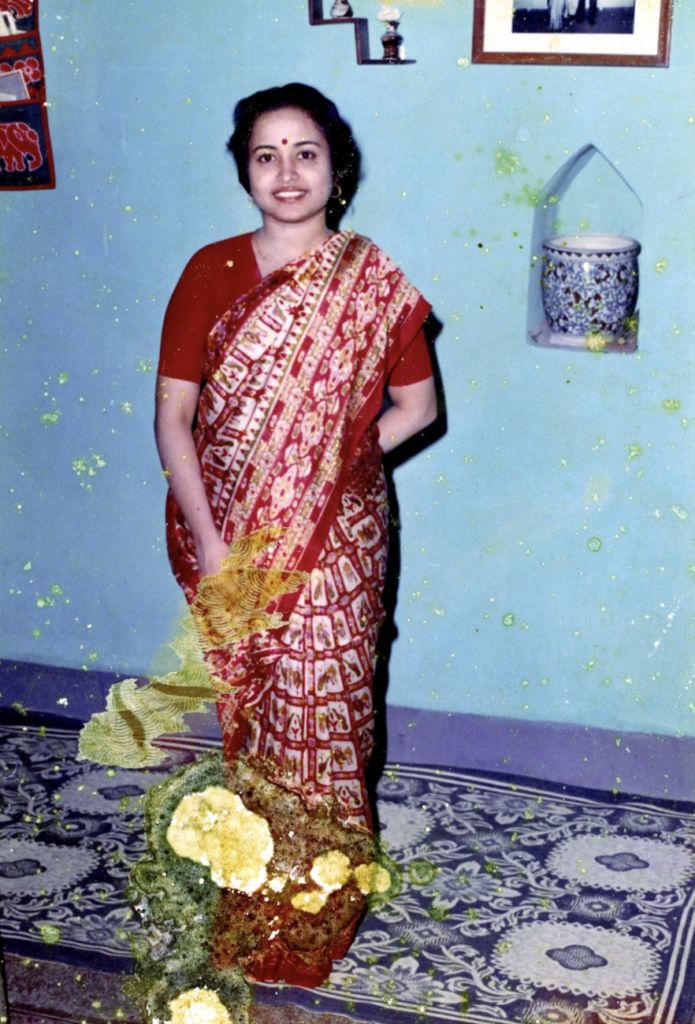
John Berger, in his collection of essays Ways of Seeing, eloquently theorizes, ‘From earliest childhood [a woman] has been taught and persuaded to survey herself continually. And so she comes to consider the surveyor and the surveyed within her as the two constituent yet always distinct elements of her identity as a woman. She has to survey everything she is and everything she does because how she appears to others, and ultimately how she appears to men, is of crucial importance for what is normally thought of as the success of her life….One might simplify this by saying: men act and women appear. Men look at women. Women watch themselves being looked at. This determines not only most relations between men and women but also the relation of women to themselves. The surveyor of a woman in herself is male: the surveyed female. Thus she turns herself into an object—and most particularly an object of vision: a sight.’
In privileging the male gaze, the extraordinary creativity of many feminine self-representations gets lost. This is not by any means to suggest that the matrimonial portraits of women are not expressive of agency and individual desire. They embody highly personal non-collective yearnings and fantasies. The question here is not so much the presence or absence of ‘the individual, but rather the nature of the chronotope in which the body is made to appear.
A matrimonial photograph is potent with possibility, imagination, and a desire for an alliance. While appearing as the potential wife of one, the woman in the photograph allows for multiple suitors to behold her identical image across various contexts. The printed form of the photograph makes this experience singular and confidential. If the photographs are approved by the prospective groom’s family, an in-person meeting is set up to discuss marriage prospects with the prospective bride’s family. If the photographs are rejected, it is normative to send the prints back to the family— failing to do so is deemed extremely disrespectful.
My father was in correspondence with another woman when he received my mother’s matrimonial photograph as a proposal. He ultimately selected my mother’s photograph—a full-length portrait of her wearing a red saree with floral motifs on it. As I insist, he recalls more details —a rug, a vase, and my mother’s short hair. My father jokes about how he had forgotten to send the photographs back to the woman he pursued briefly before, which was met with criticism and a lengthy letter sent by her father, stating his disappointment in him with harsh language.
Narain writes, ‘The ‘life’ of the photograph after its function in the matrimonial dialogue is also translated in material terms as it appears in family albums of the married couple or one of their natal families, framed and hung on walls or placed on tables, or forgotten among other objects in places of storage. Memory and materiality are closely connected in the matrimonial photograph that is responsible for changing family configurations through conjugality, although its utility after marriage is highly diminished in comparison to its prior significance.’
My mother’s matrimonial photographs now rest within my family albums as a sub-archive. They’re uncared for and shoved into plastic slots between photographs from unrelated events in the album. These photographic prints, over the years, have faded in color. They bear scratches from hands they have passed through and flaunt the dried glue marks behind them with pieces of paper still stuck from the album pages they were ripped from. They are a visual testimony of my mother’s experience being photographed as a prospective bride, one that is formative for many young women who came before and after her, including me.
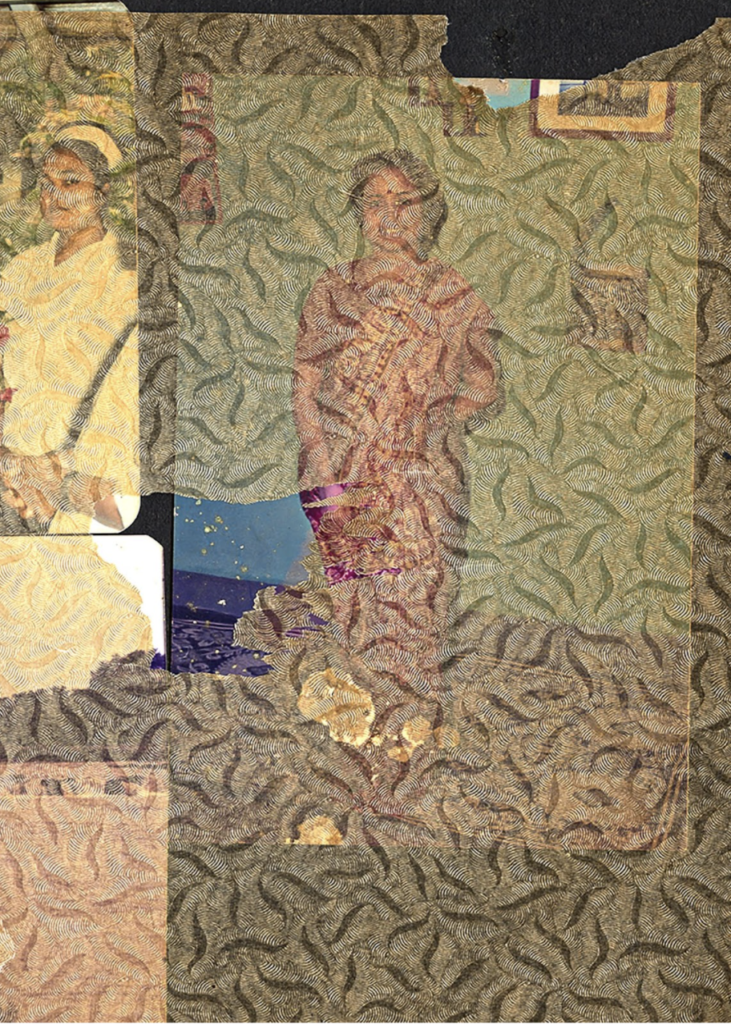
The matrimonial photograph is one of the multiple ways in which women have been portrayed through visual means in social institutions such as marriage in India. The printed photograph appears at, both, the point of culmination of historical and sociological forces and at the point of origin for new systems of material and visual dissemination. When recontextualized within the modern, predominantly online dating culture the traditional matrimonial photograph transforms into a “thirst trap”, and yet represents the same hope for finding a partner where an algorithm does the desiring for you. It transcends its boundaries concerning privacy and dignity, yet foregrounding the same (if not more nuanced) ideas of self-representation, aspirations, desire, and alliance in its digital form—its meaning still resting in its function: an arranged marriage proposal.
[1] Narain, Suryanandini. 2011. “Photographing the Feminine: a Study of Women as Subjects of Photography in Indian History since Late 19th Century.” Framing Women: Gender in the Colonial Archive (MARG) 62.
[2] Majumdar, Rochona. 2009. Marriage And Modernity. New Delhi: Oxford University Press. 2.
[3] Tagg, John. 1993. The Burden Of Representation. Minneapolis, Minn.: University of Minnesota Press. 164.
[4] Majumdar, Rochona. 2009. Marriage And Modernity. New Delhi: Oxford University Press. 41.
[5] Berger, John. 1972. Ways Of Seeing. London: Penguin. 45.
[6] Narain, Suryanandini. “Photographing the Feminine: a Study of Women as Subjects of Photography in Indian History since Late 19th Century.” Framing Women: Gender in the Colonial Archive (MARG).
